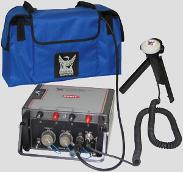

|
Home |

|
About Us |

|
Contact Us |
|
Back Project |

|
Referances |

|
Survey |
|
The thermal energy stored within the earth's crust is collectively called geothermal energy. In some parts of the world hot rock formations within the crust contain water, which is the ideal medium for carrying this energy up to the earth's surface in a useful form. Geothermal activity, such as hot springs and fumaroles, has been known and made use of for many centuries in places as far apart as China, Latin America and Central Europe. But where does all this hot fluid come from? In areas of active volcanism, the upper crust is frequently intruded by hot magmatic intrusions. These intrusions move heat from the inner parts of the earth towards the outer crust. They are the prime force that usually drives geothermal systems. In order to have a geothermal system that can be utilised, several factors must be coincident. The heat source needs to be large, presence of water is essential and the bedrock has to be porous, since cold water must be able to enter the system, be heated up and ascend to the surface as hot water or steam. In some systems convection is effective in bringing hot fluids up towards the surface. In other areas, usually the low-temperature ones, the hot water can originate at some distance from the surface manifestations. |
JS EQUIPMENT MTU SERIES / System 2000 Satellite-Synchronized Data Acquisition Units· Lightweight, portable, rugged · No cable links required · GPS synchronized · 10 000Hz to 0.00002Hz · 24-bit digital resolution · Wide dynamic range · Operable from 20°C to +50°C · Available with 2, 3, or 5 channels per instrument (electric, magnetic, or both) · Unlimited number of channels per system |

Vaisala CARBOCAP® Hand-Held Carbon Dioxide Meter GM70· Two optional sampling methods: diffusion or pump aspiration · User-friendly meter with multilingual user interface · Numerical and graphical display of measurements · Data can be logged and transferred to PC via MI70 Link software · Wide selection of measurement ranges · Suitable for field checking of fixed CO2 instruments · Multi-probe operation; dewpoint and relative humidity probes can also be connected |

|
Markus 10 The Markus 10 is a portable, battery powered instrument for determining the radon content in the soil. It is designed to be as simple as possible to operate. |





